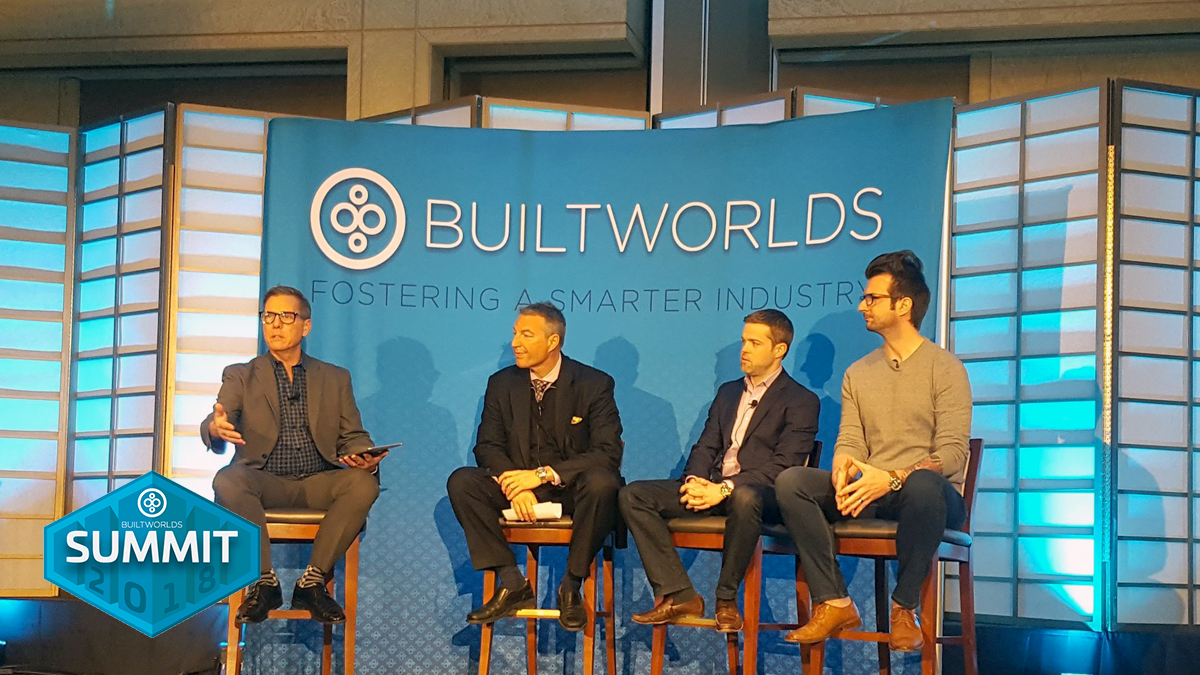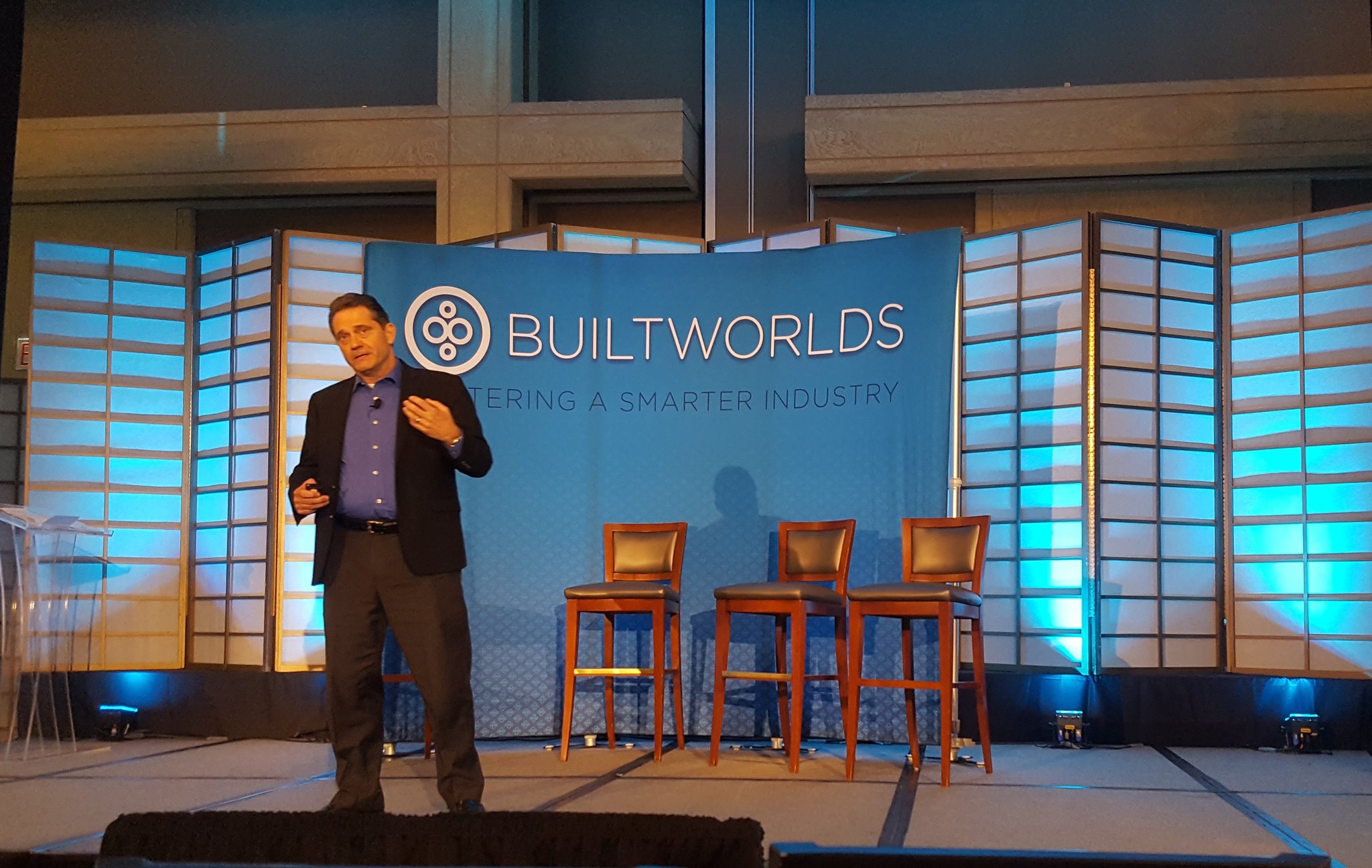
Today on the final day of 2018 BuiltWorlds Summit, the community heard from some of the most dynamic, forward-thinking voices in the industry through a series of dialogues, keynotes, and networking sessions. Construction, architecture, and engineering leaders offered insight into a more efficient, technology-enabled built world future, and in that future, velocity and versatility will be invaluable. Friday’s Summit made one thing abundantly clear: the industry is evolving at a more rapid rate than ever before. The question on everyone’s minds? Is the industry at its “Uber Moment” of disruption?
“The world where you get a four-year degree and spend the next 30 years doing what you learned in four years – that world is over. The notion of being a student for life and constantly learning is what we’re bringing into the ecosystem.” – Veresh Sita, WeWork
“The world we live in now is all about velocity,” declared Veresh Sita of WeWork in the morning’s first keynote presentation. “If there is one single thing to optimize for, it is velocity. It’s all about speed.” In their disruption of the real estate industry, WeWork has created an end-to-end building solution that isn’t just quick, but equally efficient and intuitively designed. Density, Sita argued, is what makes a “hole in the wall joint” endearing and captivating. Capturing that sense of community where density complements amenities may very well be the future of building development and management.
While technology was at the forefront of Summit conversations all day Friday, it wasn’t for technology’s sake. “It is never about the shiny stuff,” George Karayannis, Vice President of Panasonic’s CityNOW, an arm of Panasonic developing one of the most impressive smart city solutions in North America in Denver, Colorado. “Repeat after me: it’s never about the shiny stuff. The humancentric design is always in the middle.”
A panel on emerging trends in real estate development stimulated fascinating discussion in regard to the repurposing of retail space as well, further concreting the idea that the built industry, as a whole, must collectively focus on organic, fluid solutions for a quickly changing world. “A lot of people are changing so the business models are changing,” Clayton McCaffery of McCaffery Interests said. “There is really cool innovation happening out there on the retail side. One of the ways we are seeing it is through food halls. It’s a new way of monetizing restaurant sales.”
The methods in which we power our ever-growing cities were, too, discussed in an afternoon panel at the Summit. A consensus was immediately clear: data aggregation isn’t as much of a problem as the utilization of said data is.

“Buildings need to be open enough to accommodate things that haven’t yet been developed,” Raj Gupta of ESD said, before making an example of how HVAC systems in a movie theater will cool the rooms more than necessary because they’re predicting a full house. These “dumb systems,” Gupta said, should be “talking with the point-of-sales system” to use data already at hand. Albeit simple, this example illustrates how the industry needs to harness the power of existing (and growing) data.
At its core, the BuiltWorlds Summit is an annual opportunity like no other in the industry. Valuable networking, superb panels, insightful keynotes, and great food and drink are all underlined with the most unique element of all: discourse. This year’s Summit facilitated relationships and discussion amongst CEOs, Mavericks, industry veterans, and newcomers alike, all of which were passionate about the same thing: fostering a smarter industry through continued innovation.
BuiltWorlds hosts a series of events throughout the year, many of which are exclusive to members, that continue discussions that were ignited this week at the Summit. Next up? Machines, Venture, and Projects Chicago are all in the near future, pushing the conversation forward with specific focuses for each event.

Discussion
Be the first to leave a comment.
You must be a member of the BuiltWorlds community to join the discussion.